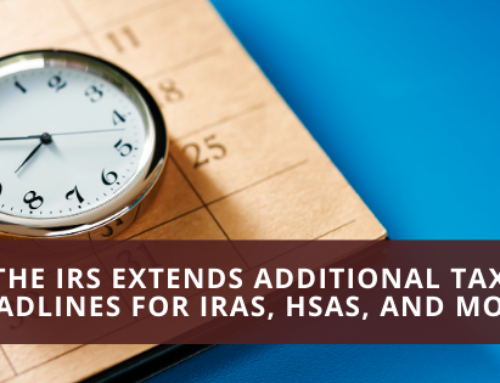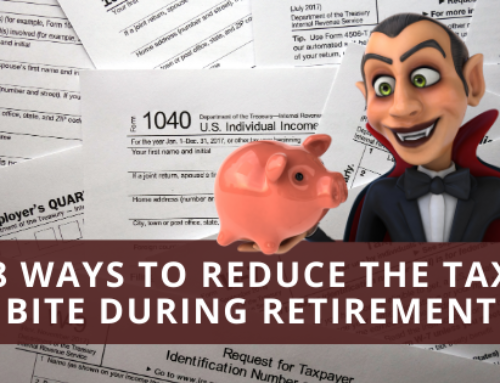 The journey to retirement spans a lifetime, marked by the pursuit of a fulfilling post-work life. Many Americans switch employers during their careers, resulting in the retention of 401(k) accounts from previous jobs. However, these dormant accounts – sometimes referred to as “orphan 401ks” remain stagnant, unable to receive contributions or management from former employers. One solution is to explore 401(k) and IRA rollovers. In essence, these maneuvers allow you to transfer the balance from inactive retirement accounts to active ones, providing control and the ability to continue contributions. This article offers a concise overview of 401(k) and IRA rollovers, along with legal and successful execution tips.
The journey to retirement spans a lifetime, marked by the pursuit of a fulfilling post-work life. Many Americans switch employers during their careers, resulting in the retention of 401(k) accounts from previous jobs. However, these dormant accounts – sometimes referred to as “orphan 401ks” remain stagnant, unable to receive contributions or management from former employers. One solution is to explore 401(k) and IRA rollovers. In essence, these maneuvers allow you to transfer the balance from inactive retirement accounts to active ones, providing control and the ability to continue contributions. This article offers a concise overview of 401(k) and IRA rollovers, along with legal and successful execution tips.
What to Do with Your Ex-Employer’s 401(k) Plan?
If your 401(k) has a substantial balance from years with one company, you face three options. First, doing nothing means losing customer support, control over investments, and the ability to make contributions. Some companies may charge ex-employees higher administrative fees. Second, withdrawing funds from a retirement plan before turning 59½ usually incurs a 10% tax penalty for early withdrawal, in addition to the standard income taxes owed on the amount withdrawn. Third, rolling over to a new retirement plan is often the best choice. Whether to your new employer’s 401(k) or a self-managed IRA, it avoids immediate tax exposure and penalties, maintains savings, offers lower fees, diverse investment options, and the ability to contribute regularly. A rollover streamlines management by consolidating old 401(k) plans. Choose wisely based on your financial goals and preferences.
How to Move Old 401(k) Funds into a Rollover IRA
IRA rollovers involve straightforward steps, though careful planning is essential. First, decide between a Traditional and a Roth IRA. In a Traditional IRA, pre-retirement contributions are tax-deductible, with post-retirement distributions taxed. Conversely, a Roth IRA uses after-tax dollars for contributions, ensuring tax-free withdrawals after age 59½. If moving from a Roth 401(k), a tax-free rollover to a new Roth IRA is possible. To make the right choice, consider simplicity and tax structure; a traditional IRA suits those favoring simplicity and maintaining their old 401(k) tax structure. For those prioritizing a tax-free retirement, a Roth IRA may be preferable, unless dealing with taxes on contributions poses challenges
Choosing Between Providers for IRA Rollovers
Multiple providers offer IRA rollovers. They aim to facilitate the seamless transfer of investments between old and new retirement plans, playing a vital role in minimizing administrative fees. Two main types are online brokerages and robo-advisors. Opt for an online broker if you prefer managing your IRA independently. Look for one with no account fees, excellent customer service, and a diverse range of investment options. You can also choose to work with your financial advisor on IRA rollovers, and they can answer any questions you may have about how to best use this strategy.
Move the Money to the Rollover IRA
Now is the point during IRA rollovers when it’s time to transfer the funds – a critical phase demanding careful attention and informed decisions. Begin by reaching out to your former employer’s 401(k) plan administrator and completing the necessary paperwork. Simultaneously, contact your new IRA provider for instructions on receiving the old 401(k) funds. While wire transfers are increasingly accepted for direct IRA rollovers, many providers still offer trustee-to-trustee checks. Wire transfers offer convenience and security, while checks may be preferred for provider record-keeping. Ensure the remittance order includes your new IRA account number, routing and bank numbers, fund destination, and other important details. Once the data is reviewed, the transfer occurs, marking the completion of the rollover process.
Indirect IRA Rollovers
The process described above is a direct rollover, where the entire balance from the old IRA transfers directly to the new one, bypassing your personal bank account. Alternatively, you can opt for indirect IRA rollovers, which involve withdrawing old 401(k) funds and personally placing them in the new IRA. However, strict regulations and consequences accompany this route. Funds must be deposited in the new IRA within 60 days of withdrawal to avoid IRS penalties, treating any missed deadline as an early withdrawal with a 10% penalty.
Contributions to IRA Rollovers
Contributions to IRA rollovers, like other tax-advantaged retirement plans, have an annual limit. In 2024, the limit is $7,000, up from $6,500 in 2023; those over 50 can contribute $7,500, unchanged from the previous year. However, Roth IRA rollover contributions, taxed upfront, may be limited, especially if your spouse has a retirement plan or your income exceeds a set threshold. If transitioning to a job with a better 401(k) plan, blending IRA contributions and rollover funds can complicate matters, as 401(k) plans aren’t typically set up for after-tax contributions. To avoid challenges, keep contributions to IRA rollovers separate from the original account. Regardless of your situation, consulting a tax professional before significant account changes is advisable.
Which 401(k) or IRA Rollovers Are Best for You?
No matter your financial literacy or existing retirement savings arrangement, initiating 401(k) or IRA rollovers involves many steps and requires a practical understanding of each part of the process.
Between reaching out to old employers and navigating the tax requirements, having a financial professional with abundant tax experience by your side is important. Take the time to find a financial advisor with experience in 401(k) and IRA rollovers to help you maximize your retirement strategy.
If you’d like to discuss this topic further, feel free to contact our office at (336) 391-3409 to schedule a no-obligation consultation.
Sources:
- [1] https://www.sofi.com/learn/content/orphan-401k-retirement-accounts
- [2] https://www.aarp.org/retirement/planning-for-retirement/info-2023/what-to-know-cashing-out-401k.html
- [3] https://www.investopedia.com/ask/answers/08/distribution-traditional-ira.asp
- [4] https://www.irs.gov/newsroom/401k-limit-increases-to-23000-for-2024-ira-limit-rises-to-7000





